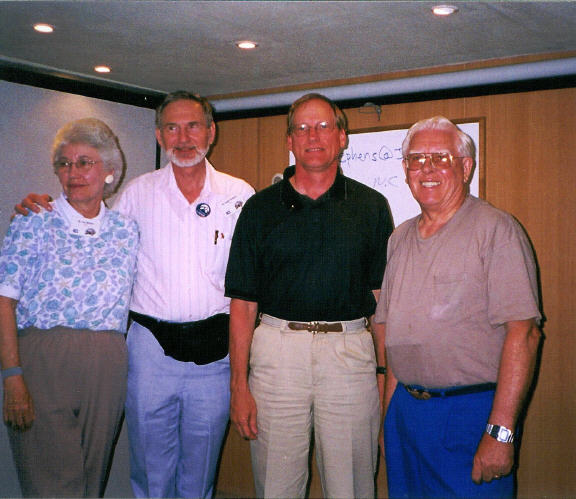
We were blessed to have three wonderful ICR scientists on this tour: Dr. Jan Mercer (biologist), Dr. Roger Sanders (botanist), and the tour director Dr. Ken Cumming (biologist). My education is all in biology as well. (No, I don't have any theology training.)
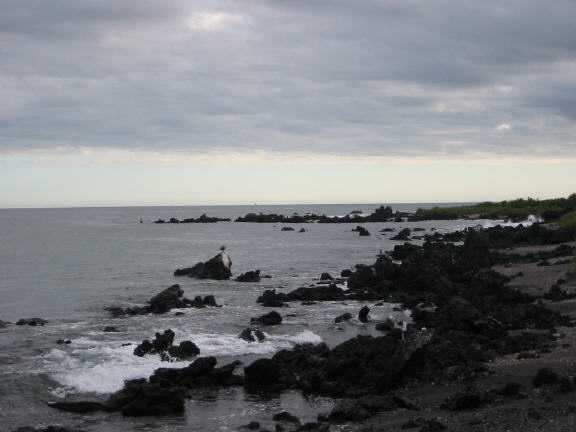
This afternoon's excursion to Urbina Bay featured some snorkeling from the beach and a short hike searching out land iguanas, and hopefully giant tortoises. (We were warned beforehand, however, that the chance of seeing a giant tortoise was only about 10%.) The snorkeling was disappointing since the water was very murky, the surf was very rough, and there just wasn't a lot to see. I was able to observe another green sea turtle and a very large school of silvery, minnow-like fish that pelicans, penguins and boobies were feeding on. Our good friend Dr. Rebecca Orr saw a penguin in the water, but I never saw it, and headed in early because of the difficult conditions. She also saw more pufferfish (also known to the guides as 'porcupine fish"), zebra fish, and about a half-dozen sea turtles of various sizes.
This was a rather desolate beach. The black volcanic rocks were very stark, and the sand was black and extremely coarse, consisting of ground up lava.
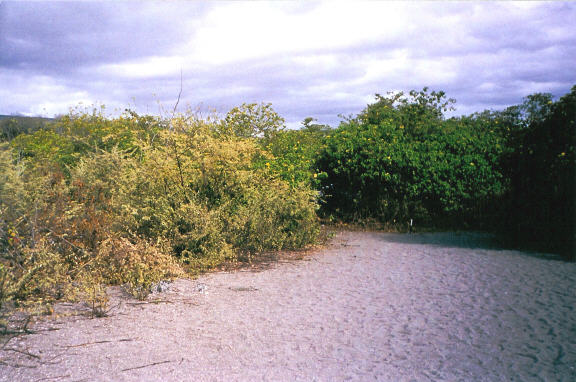
Knowing how flat the terrain was and easy to walk on, our guide Juan Carlos strongly encouraged Sue to join us on this hike. We appreciated his concern for her to be able to experience as much as possible.
He told us that the flat, hard sand--quite easy to walk on--was flat because it had been the sea bottom until just fifty years ago. There was a rapid upwelling during a volcanic eruption, which suddenly transformed the sea bottom to new dry land.
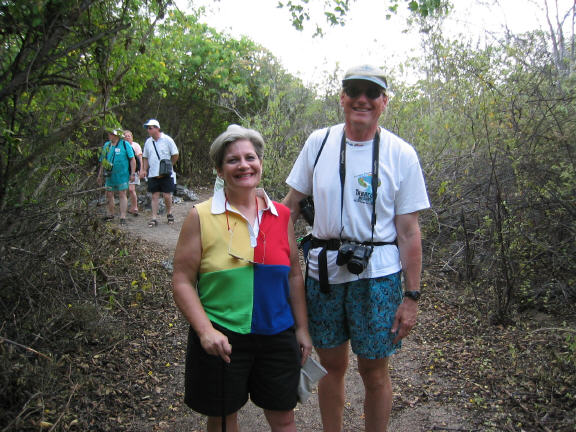
So here we are, both of us on an excursion together for the first time! I'm still in my swimming trunks from snorkeling.
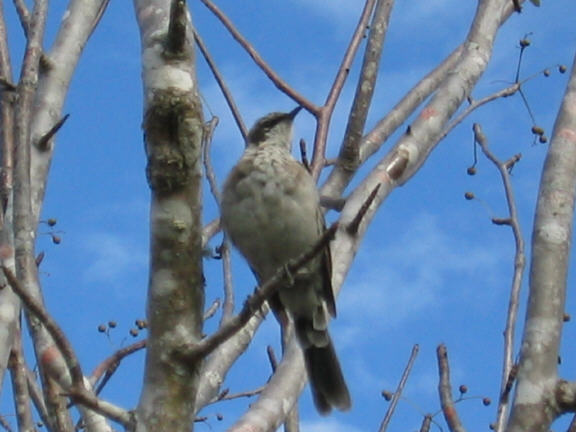
Galapagos mockingbird.
Those who have studied the mockingbirds can tell which island each one is from, just like with the giant tortoises. This is because of differentiation, the process of unfolding the genetic flexibility God designs into each species. When the colonizing animals moved to each specific island, their physical characteristics were able to change and adapt to their new environment.
Unlike the mockingbirds in North America, the Galapagos mockingbird does not imitate sounds it hears. In other words, this mockingbird doesn't mock!
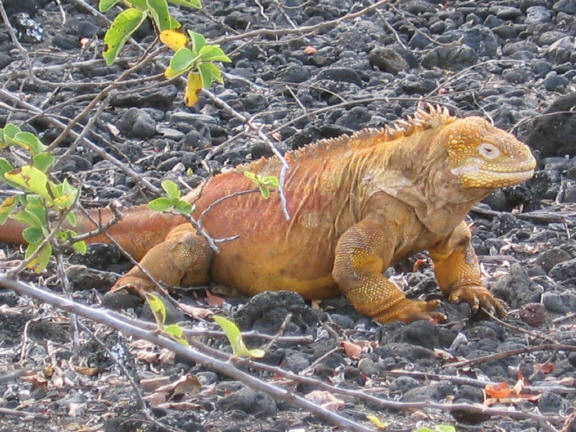
We finally found what we were looking for: a land iguana who was delightfully cooperative in allowing us to come right up to him (her?) and let us snap pictures to our hearts' content. Note the small "smile," which the land iguanas have but the marine iguanas don't.
Darwin wasn't as tickled as we were. He wrote in The Voyage of the Beagle:
"Like their brothers the sea kind, they are ugly animals, of a yellowish-orange beneath, and of a brownish-red color above: from their low facial angle they have a singularly stupid appearance. . . . In their movements they are lazy and half-torpid. When not frightened, they slowly crawl along with their tails and bellies dragging on the ground."
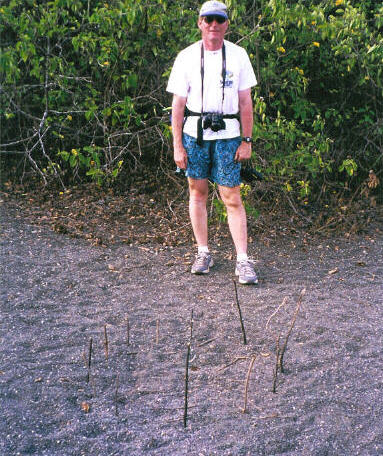
The Galapagos naturalists had discovered a freshly made iguana nest, which they marked with sticks to keep people from walking on it.
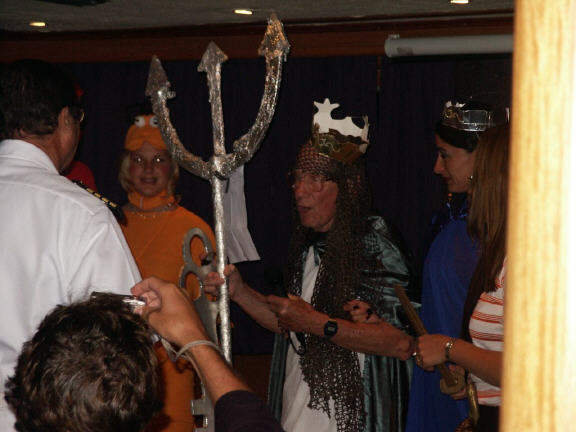
It is apparently the custom of ships that cross the equator to have an "Equator Crossing Party." (At least, that's what they said on the Travel Channel!) The cruise director, Yvette, wrote a script for our party that included several costumed characters. She chose one of our ICR folks, Dr. Curtis Caine, to serve as Neptune. (You can see his script taped to his trident.)
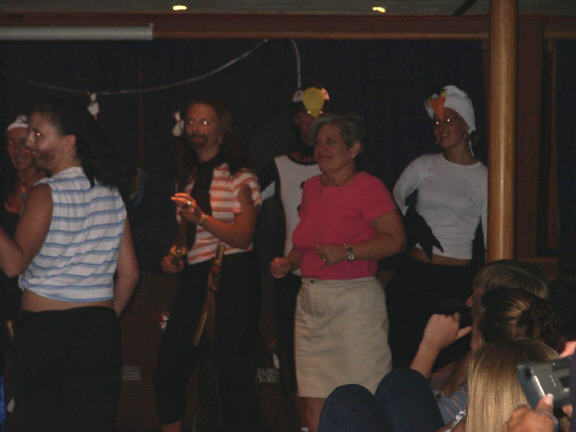
A few of the characters were told to go pick hapless audience members to participate in the skit, and Sue was the first one chosen. Because she was wearing pink (no surprise to those who know her!), the King of the Sea dubbed her an honorary flamingo.
(We have no idea what she's doing here.)